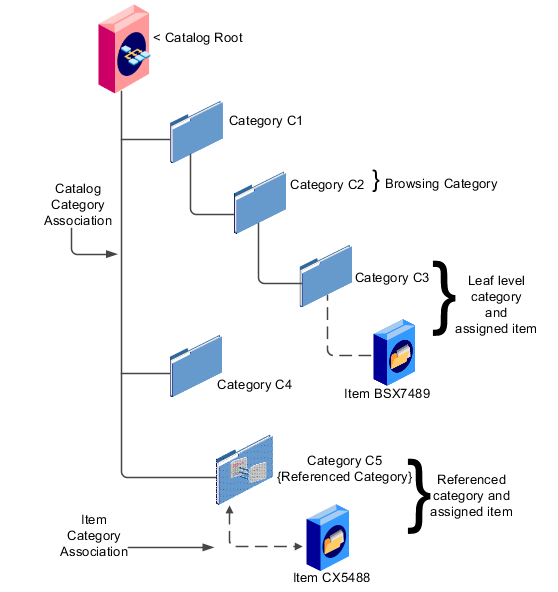How Various Catalog Hierarchies Fit Together
You use catalogs to organize and classify collections of items by associating categories with the catalog.
You organize the categories to form a taxonomy and assign items to the categories. When you associate a category with the catalog, a catalog category association is created which specifies the relationship of the association. The catalog category association may also represent the relationship between two categories, for example, a relationship between a parent category and a child category.
The following figure shows the relationships of the category hierarchy components.

Components
The components of a category hierarchy are:
-
Catalog root: The topmost node in category hierarchy that represents the object called catalog.
-
Category: The catalog component that is used to represent the classification structure.
-
Catalog category association: The line in the diagram represents the relationship between a catalog and category or between a parent category and child category.
-
Item category assignment: The dotted line in the dialog represents the relationship between a category and an item.
-
Reference category: The category, C5 in this diagram, is shared as a reference category from a source catalog.
-
Leaf level category: The lowest or bottom-level category in a category hierarchy. You can assign items to all levels in a category hierarchy if you configure the catalog to support this.
-
Browsing category: The category, C2 in this diagram, is a browsing category. Browsing categories are categories that you add to the category hierarchy for the purpose of classification and do not have items assigned to them.
The category hierarchy does not have a limit on how many levels can be represented. The category hierarchy can have multiple hierarchies within a single category hierarchy.